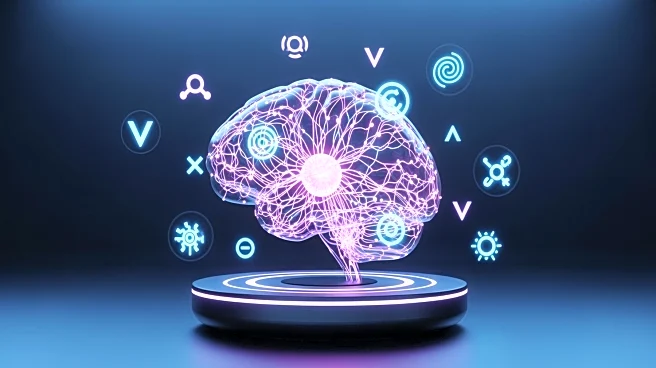What's Happening?
A new brain decoding method, known as mind captioning, has been developed to translate visual thoughts into text. This innovative approach uses semantic features from vision-related brain activity and
deep learning models to generate structured sentences without relying on the brain's language system. The method has shown success in decoding and captioning remembered videos, indicating that rich conceptual representations exist outside traditional language regions. This breakthrough offers potential for nonverbal communication tools and redefines how thoughts can be decoded from brain activity.
Why It's Important?
The development of mind captioning technology represents a significant advancement in neuroscience and communication. It opens up possibilities for individuals who cannot communicate using spoken or written language, such as those with aphasia or locked-in syndrome. By bypassing traditional language networks, this technology could provide new avenues for assistive communication devices, enhancing the quality of life for people with severe communication impairments. Additionally, it may lead to new applications in brain-machine interfaces, allowing for more intuitive interaction with digital systems.











